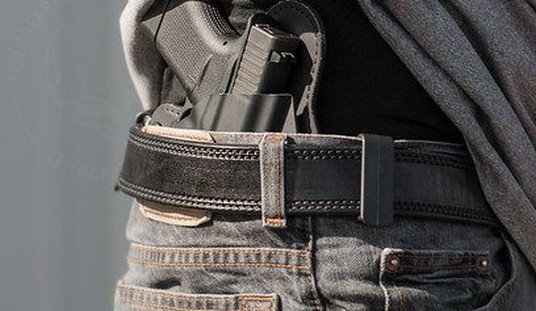Within the human mind, there’s a hierarchy of responses one takes against a possible threat. Way back when, that was basically summed up with “fight” or “flight,” responsible built into our biology. As mankind began creating societies, which means laws, some things eventually changed. We added some suggestions to the hierarchy for use at different points.
One of those is the restraining order.
When someone is feeling threatened, they have the option of having a court declare that the threatening individual must remain a certain distance away. Failure to do so will lead to the individual being arrested.
At least, that’s the theory.
However, that only goes so far. For one, the police can’t constantly monitor who is where at any given time. Absent a cop camping out in your front yard, they can’t protect you day and night.
At best, they can respond to the person being where they don’t belong. That’s it.
Unfortunately, that’s not always enough.
In San Diego, a woman took a restraining order out against her estranged husband. She was scared of him. She was worried he’d hurt her and/or her three children.
Less than 24 hours after she took out the restraining order, her husband came and shot her, their three children, and turned the gun on himself. Both adults were dead at the scene, as was one of the children. Two others died at the hospital with a third undergoing surgery to save his life.
This technically counts as a mass shooting, as per the definition I typically use that’s based on the FBI’s definition of mass murder. Four or more people were killed in a single incident, which meets the FBI’s definition, and the weapon used was a firearm. It’s a mass shooting.
And the restraining order did nothing to prevent it.
Now, I’m not saying we shouldn’t have restraining orders. They serve a purpose, but they’re not magic talismans. They don’t keep the evil away just by their mere presence. They’re a tool and nothing else.
As I wrote last week, I’ve got a friend who is in a tough spot with a deranged family member. They truly fear for their lives and view this family member as a credible threat. They, too, have a restraining order.
My advice to them was to use it as a tool and nothing more. Used in conjunction with wireless cameras, they could record the individual near their home, even when they’re not there, and have the police make contact over it. In their state, violating a restraining order is only a misdemeanor, but it may foul up someone’s ability to case a house later.
At the end of the day, though, it’s still just a piece of paper. If a violent person is determined to visit harm upon your person, that piece of paper isn’t going to stop them. After all, if they’re willing to risk prison time to hurt you, why would a few more days in jail be a deterrent?
It’s not. It never will be.
The duty to protect your life falls upon you, the individual. It will always fall upon you, no matter what an anti-gunner tries to claim. The police aren’t there to protect you. They’ll show up just in time to draw chalk outlines around your body, though.
If you are feeling threatened, it’s imperative that you take proactive steps, steps that weren’t necessarily available to the victim here. Steps like buying a firearm. California has a 10-day waiting period for a firearm. For all we know, she was still waiting.
Plus, we all know how difficult it can be in some California counties to get a concealed carry permit. Had she had a firearm but not been able to carry it, the same thing may have happened, only more publicly.
While gun control advocates will continue to claim that gun control saves lives, the truth is that incidents like this happen with startling frequency. Especially in states that are so determined to restrict gun ownership that they completely ignore the fact that some people need guns to defend their lives.
Restraining orders won’t cut it. That’s the problem with them. They’re a step, a legal warning that you recognize a threat. It serves to push away those who are merely creepy, but they’re not enough. For that, people need an effective means to defend themselves from a truly determined attacker, someone who doesn’t care about going to prison for whatever reason.
The problem with restraining orders is they are most effective when used in conjunction with guns.








